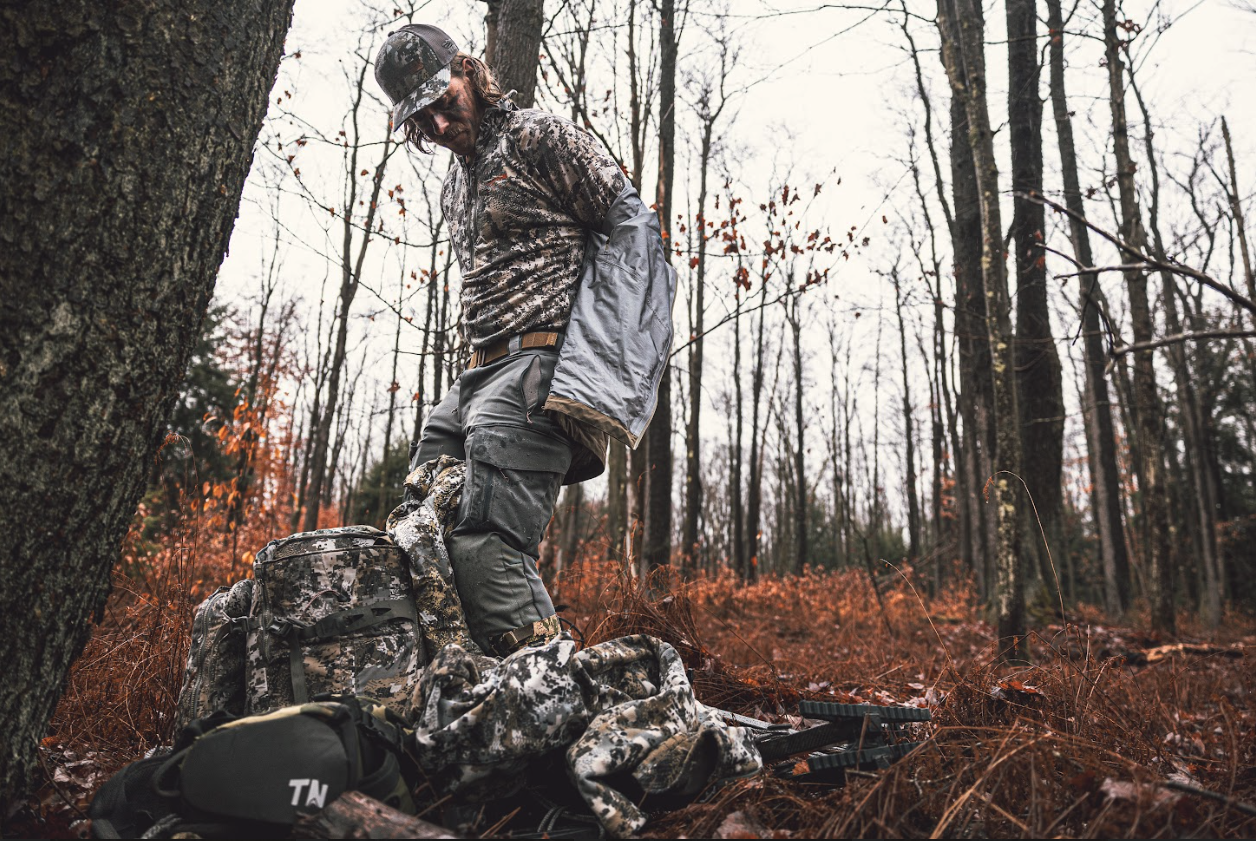
Rut Hunting Layering System: Beau Martonik’s Cold-Weather Whitetail Kit
Article by: Beau Martonik
When the temps drop into the 20s and 30s, my clothing system isn’t just about comfort — it’s about survival and maximizing time on stand. Over the years, I’ve dialed in a rut hunting layering system that lets me hike in light, layer up at the tree, and stay warm all day long without sweating myself into a cold, miserable sit.
This is the exact Sitka layering setup I use during the rut — from base layers to outerwear, boots, gloves, and accessories.
Why Layering Matters in the Rut
I can’t emphasize this enough: your layering system works as a whole, not just piece by piece. No single jacket will keep you comfortable from pre-dawn hikes to late-day sits.
-
Moisture is the enemy — sweat leads to chills.
-
Wind kills warmth faster than almost anything.
-
Smart layering means less bulk, more comfort, and longer hunts.
Base Layer: Merino Against the Skin
I always start with Sitka Merino 120 next to skin. It’s lightweight, breathable, and great at managing moisture. Merino stays warm even when damp, and it doesn’t stink after multiple days in the field.
I don’t usually wear a bottom base layer unless it’s extremely cold. If I do, I’ll use a thin Merino 120 bottom. I’d rather layer lightly and stay dry on the hike in.
Pants: SITKA Timberline Pants
I’ve been wearing Timberline Pants since 2016, and they’re still one of my favorite pieces for rut hunts.
-
They’re a little heavier — perfect for mid-to-late season.
-
Waterproof knees and seat keep me dry when I kneel or sit on damp ground.
-
DWR-treated fabric sheds light rain.
-
They take removable knee pads, which is great for saddle hunting.
Mid Layer: Merino 330 or Ambient Hoodies
My mid layer is where I start to trap heat but still allow moisture to escape.
I rotate between:
-
Merino 330 Hoodie — I love the thumb holes and the built-in merino face mask. It’s soft, warm even when wet, and really comfortable.
-
Ambient 75 or 100 Hoodie — breathable active insulation that works great when I’m moving or layering lightly.
I lean toward the Merino 330 most of the time, especially on those cold, still mornings.
Static Insulation Layer: Ambient 200 Jacket
Once I get to the base of my tree, I throw on my Ambient 200 Jacket. I like this piece because it’s warm but still breathable, and it doesn’t have a hood — which avoids “hood stacking” with my other layers.
It’s an active insulation piece, but it works really well as static insulation under my shell.
Outer Shell: Sitka Stratus 2.0 System (2025 Redesign)
The Stratus Bibs and Jacket are the backbone of my rut kit.
Stratus 2.0 Bibs
The redesigned Stratus Bibs (2025) have a new lower leg material that sheds burrs, improved pocket layout, and they’re fully windproof with Windstopper®.
Stratus 2.0 Jacket
The new jacket includes a built-in grunt tube holder, a rangefinder pocket, a removable hood, and harness pass-through. It’s quiet, blocks wind, and layers easily over my insulation.
If someone asked me to pick just one kit for whitetail hunting, I’d tell them the Stratus system is what I use about 90% of the season.
Accessories: Hands, Head & Feet
Gloves & Hand Muff
I use Fanatic Gloves because they keep my hands warm without sacrificing dexterity. I pair those with a Jetstream Windstopper Muff, and I’ll drop a hand warmer inside for all-day warmth.
Headwear
For my head, I wear a Merino 330 Beanie on the hike in, then layer the Blizzard Gore-Tex Hat over top. I like having a brim to keep the sun out of my eyes and the ear flaps for added warmth. It’s basically a layering system for my head.
Footwear & Overboots
For boots, I wear Schnee’s Beartooth 200g — they’re breathable, lightly insulated, and great for hiking. I size them for a midweight merino sock so I don’t cut off circulation.
Once I’m on stand, I slide on Arctic Shield overboots with a chemical body warmer inside. This simple trick keeps my feet warm all day, even in subfreezing temps. Honestly, the Arctic Shields are listed, because they do the job, but there are a lot of things I don’t like about them. I’ve been working on one myself that you will hopefully be seeing soon…
Final Thoughts
Rut hunting means long, cold, motionless sits. The difference between being miserable and being focused is how you layer.
My system is built around moisture management, wind protection, and smart, lightweight insulation. With this setup, I can stay warm from dark to dark and stay sharp when it counts.
If you’re looking to build your rut kit, I’d start with a solid base and the Stratus system — and build around it.

